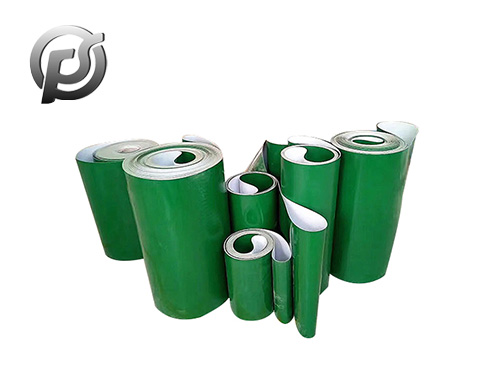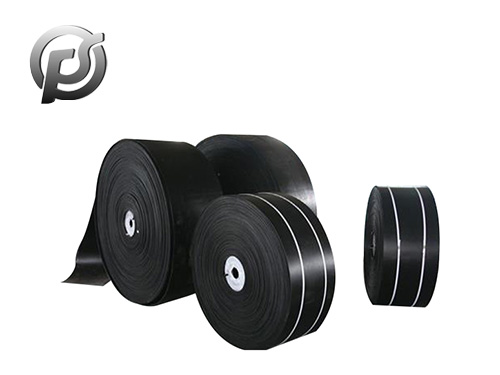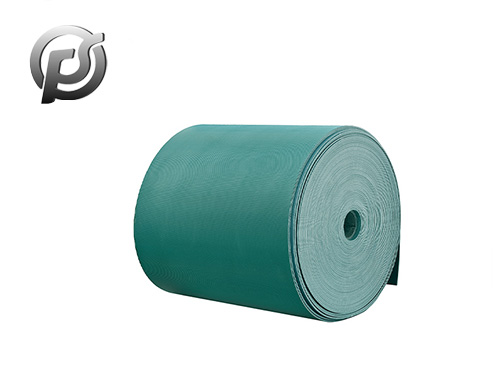The large-angle conveyor uses the wavy guard conveyor belt to replace the ordinary conveyor belt. Its working principle and structure composition are basically the same with that of the ordinary belt conveyor. The conveyor belt of the ordinary belt conveyor is taken as the base belt, and the wavy guard is bonded (cold adhesive or secondary vulcanization) on both sides, and on the base belt between the two wavy guards. Adhesive (cold adhesive or secondary vulcanization, bolt consolidation of large diaphragm) upper diaphragm at a certain distance.
Bucket elevator housing is evenly covered with fixed on the flexible traction member of the hopper, the material into the hopper, through the upward circulation movement of the traction member to achieve vertical lifting transport. The bucket extractor is specially used for conveying powder, granular and small block materials vertically (such as TD/TH/NE type bucket extractor) or inclinately (such as T/L type dewatering pit type bucket extractor), with conveying capacity up to 600t/h and generally lifting height less than 40m; In recent years, due to the development of steel rope core conveyor belt, the strength of traction component has been greatly improved, the conveying capacity has reached 1600t/h, and the lifting height has reached 80m (such as TDG type efficient bucket lifting machine). At present, most of the general bucket lifting machines in China are vertical, and the inclined bucket lifting machine is less used because of its complex structure.
Bucket elevator simple structure, smooth operation, scoop type charging, mixed or gravity unloading, bucket elevator rim using combination sprocket, easy to replace, sprocket rim special treatment long life, such as the lower gravity automatic tensioning device, can maintain a constant tension, avoid slipping or chain, at the same time in the hopper, It has a certain capacity to effectively protect the moving parts, and the material temperature does not exceed 250 ℃.
Characteristics of large dip Angle belt conveyor: large dip Angle belt conveyor has universal belt conveyor mechanism simple, reliable operation, convenient maintenance and other advantages, and has the characteristics of large dip Angle conveying, compact structure, less area, so it is the ideal equipment for large dip Angle conveying and vertical lifting materials. At present, large dip Angle belt conveyor is widely used in coal, food, building materials, metallurgy, electric power, chemical and light industry and other industries. And to the direction of large lifting height, large transportation capacity development, in underground mining and underground construction engineering, open-pit mining, large dump ship machine and other fields have been used. Large dip Angle belt conveyor has the following main characteristics:
1, can be large dip Angle transportation. Its maximum transport Angle can reach 90°. Because of the realization of large dip Angle transportation, the length of the machine is shortened, the area is reduced, and the cost of equipment investment and civil construction is saved.
2. Large conveying capacity. As the conveyor belt has wavy guard, its loading section area increases. Under the condition of the same bandwidth, the conveying capacity of the belt conveyor is 1-2 times higher than that of the ordinary belt conveyor.
3. Small power consumption. Because it can vertically lift materials, it can be used instead of bucket elevator and buried scraper conveyor; And there is no digging resistance or internal and external friction resistance of the material when feeding, so the power loss is small.
4, simple structure, convenient maintenance.
5, stable operation, reliable work, low noise.
6, application: large Angle belt machine is suitable for conveying gravel, limestone, coal, coke, sand, clay, grain, wood chips, sintered materials, etc., its density is 0.5-2.5t/m3, can accommodate the maximum particle size of about 100-250mm materials. The ambient temperature is -19-+40℃. When conveying high temperature materials and acid, alkaline and other materials, should choose special materials of wavy guard conveyor belt.
 Optimizing Operations with PE Conveyor Belts: Durability, Efficiency, and Versatility
Optimizing Operations with PE Conveyor Belts: Durability, Efficiency, and Versatility
 Exploring the Efficiency and Versatility of Light Conveyor Belts
Exploring the Efficiency and Versatility of Light Conveyor Belts
 Polyester Conveyor Belts: Enhancing Efficiency and Reliability in Material Handling
Polyester Conveyor Belts: Enhancing Efficiency and Reliability in Material Handling